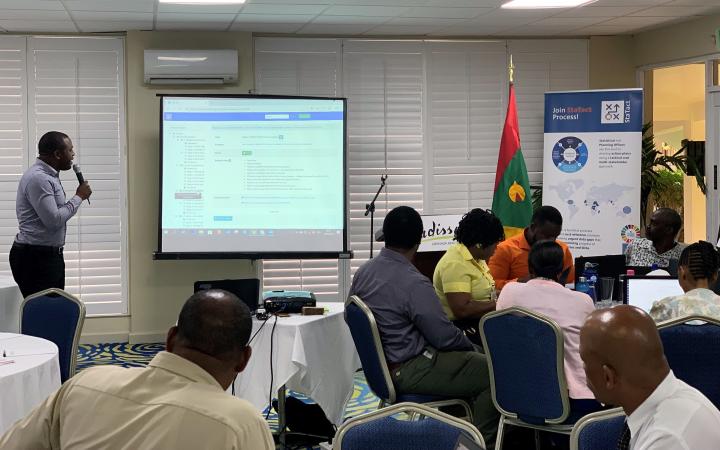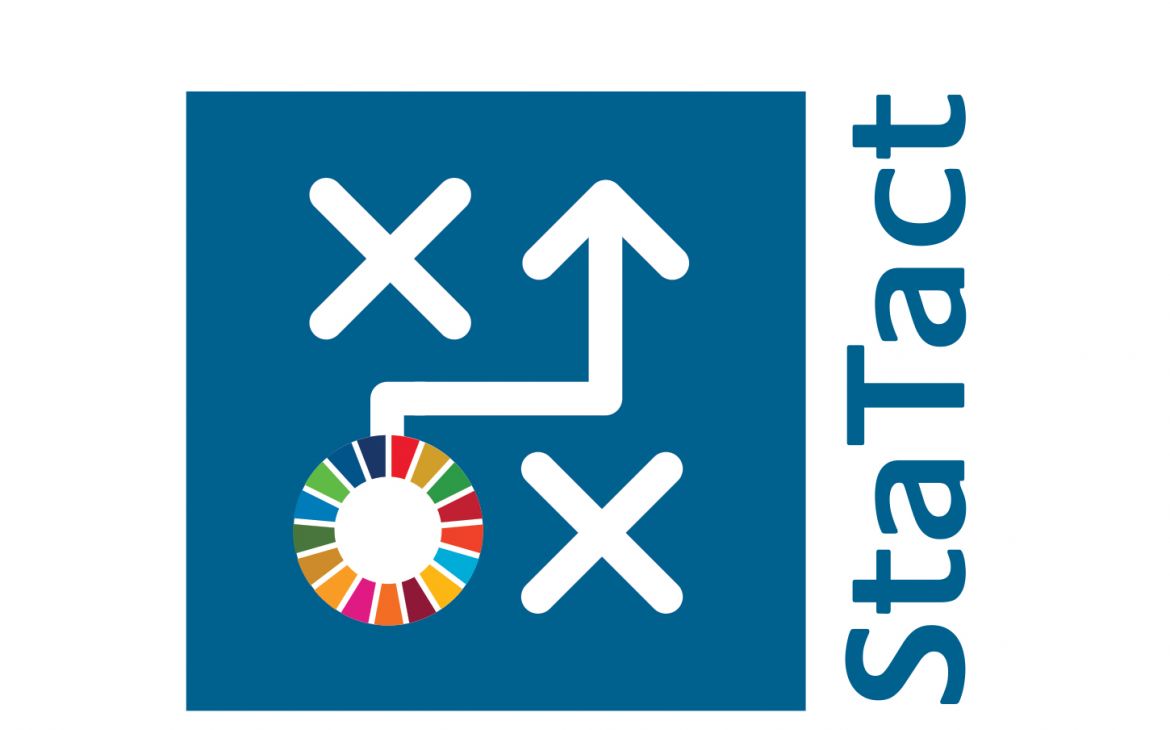In April-May 2019, Small Island Developing States in the Asia-Pacific region will use StaTact: a new web-based tool developed by UNITAR and the UN Statistics Division (UNSD) to support short-term statistical planning leveraging SDG, regional and national indicators. Country groups of officials from National Statistical Offices, Planning, Finance and selected line Ministries as well as representatives of non-traditional data sources will carry out action planning to address pressing SDG data gaps in the context of StaTact workshops to be held in Sidney and Nadi from 23 April to 3 May 2019.
Given the significant data requirements for SDG indicators, many National Statistical Systems, in particular those of SIDS countries, are struggling with addressing the twin challenge: How to ensure data production across all critical dimensions of the SDGs over mid to longer time horizons while at the same time making sure the most important SDG data gaps can be addressed already within the next 6 to 12 months? The examples of the latter can range from
- the production of youth unemployment data that can meaningfully inform national social protection, educational, economic and other policies through better coverage and disaggregation
- making the GDP figure available faster to inform a timely development of the annual plans, improve projections and upgrade models used by policy-makers
- ensuring geographically disaggregated data to help prioritize schools for meal plan subsidies
- strengthening availability of high-quality disability-disaggregated data
- improving availability of quality data on populations in disaster-prone areas to agencies responsible for ensuring disaster response and mitigation
- building up from zero integrated environmental databases
- or ensuring a timely response needed to produce educational data for planning purposes
One will surely think all these problems require costly solutions. Many are part of national statistical development strategies or plans but progress is in some cases looming due to resource or other limitations.
StaTact was developed by UNITAR and UNSD to help address some of these issues in a quick and non-costly way through collaboration and short-term action planning. It does so in a context-sensitive manner by setting up collaborative alliances between National Statistical Offices, other official and non-official data producers and key data users – each around a specific challenge. In some cases, it helps find quick solutions to very specific problems, in others, plan the initial actions for dealing with a more complex issue.
This new tool also aims to help countries prioritize their SDG data needs in a short run through dialogues in working groups – online and offline – and address those data gaps that are most policy relevant.
A built-in monitoring mechanism will enable workshop participants to follow up progress in the implementation of the 6 to 12-month action plans that will be agreed during the workshops. They will also be able to involve additional colleagues when necessary through a chat function. It is hoped that as a result of these workshops, StaTact will become the tool of choice for countries to address specific data gaps and ensure effective monitoring of the SDGs.
16 countries have already benefited from StaTact from February 2018 to March 2019, including 14 African and Asian Least Developed countries and more recently two Caribbean SIDS. StaTact has been developed with the funding support of the Governments of Switzerland and Sweden and is being rolled out in the Asia-Pacific region with the support of the Government of Italy.



